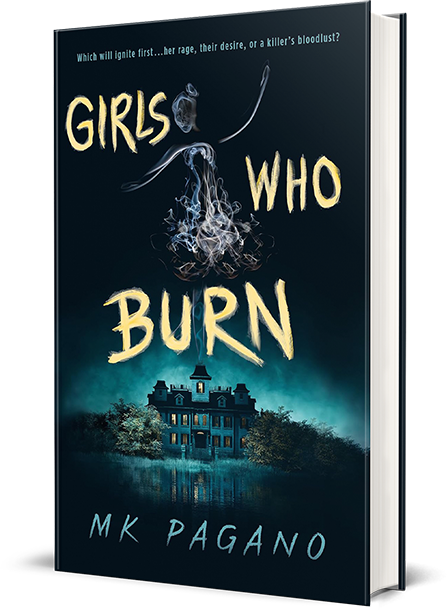Writing Tip: Setting The Scene

I’m at the point in my first draft where my heroine has moved from her small town into the grand castle, and I’m faced with the age-old writer problem we like to call “setting the scene.”
You want your readers to be able to picture the place in which your story takes place–but at the same time, bogging them down with too much detail can slow down your pacing and bore your reader. It’s a very fine line you need to walk, and one I’m currently struggling with, so I figured I’d write a post about it.
Here are three examples of a character walking into a new setting that I just wrote.
Example 1: Too little description
I walked into the ballroom and caught my breath. It was just so big and beautiful. And crowded with beautifully-dressed people. I felt very small and plain.
This doesn’t work because the only descriptions are “big” and “beautiful”. Too vague. We can’t picture it. It’s also devoid of emotion–anyone can describe something as “beautiful.” The best description takes into account the feelings of the character whose eyes we’re seeing this through. Also, be sure that your description includes more than just one sense. Too often I see beginning writers describe what their character is seeing, but don’t forget your character can smell and touch and hear as well.
Example 2: Too much description
I walked into the ballroom and caught my breath. The room was five hundred feet long by three hundred feet wide, with the ceiling stretching up another two hundred feet above my head. It made me feel smaller than the grains of sand on the shores of the Loring Sea, a place I’d visited with my parents from time to time when I was a child. The walls were a glittering gold, so bright and shiny I practically felt the need to throw up my arms and shield myself from their glare. Three dozen glittering crystal chandeliers spiraled down from the ceiling, which was the exact shade of blue of a sunny summer day in August, sending a lovely diffused golden light over the ballroom’s occupants. And how they glittered as well. A group of three women in front of me all had flowing, elaborately-bejeweled ball gowns of the most beautiful shades of emerald and ruby and amethyst. They smelled of roses and hyacinth and jasmine and every other flower in the garden outside the palace, which I liked to take walks through when I found the time. I could hear their low chatter as they talked among themselves and laughed, seemingly completely at ease in this alien, glittering world, where I, in my simple black dress darker than the night sky, was clearly out of place.
This doesn’t work because it’s too much description. There are so many descriptors it bogs you down in it all. It’s also too clinical. We don’t need the exact dimensions of the ballroom–we need to know how the narrator feels in relation to the space. And while it’s good for the narrator to describe things in relation to her own feelings–feeling like a grain of sand, for instance–too much detail on why she feels that way will lift your reader out of the present moment. And you don’t want that. There’s also the matter of sentence length. Long descriptions naturally lend themselves to long sentences, which becomes tedious. Vary your sentence length to keep the reader interested.
Example 3: Just the right amount of description
I walked into the ballroom and caught my breath. I’d never been in a space that made me feel so small–or so plain. Crystal chandeliers spiraled down from the arching sky-blue ceiling, illuminating the glimmering golden walls and a floor so polished it looked like an iced-over lake. And it wasn’t just the ballroom–the women sparkled like a box of jewels, shades of emerald and ruby and amethyst swirling before me, their low chatter accompanying wafts of rose and hyacinth and jasmine. I looked down at my simple black dress.
While this isn’t the most beautifully-written paragraph of all time–I did just make it up, after all–this is much better than the previous two examples. It has sentences of varying length, and most importantly, it gives you a sense of the setting without bogging you down in detail. It also describes what the narrator smells and hears as well as what she sees.
Like I said: description can be a difficult line to walk. And if you’re having trouble figuring out in your first draft? I think it’s always better to over-describe than under-describe, because you can always go back and cut stuff out in the future drafting and editing stages. Also, it’s important to remember that even though the reader doesn’t need to know every detail about every inch of the space you’re describing, you, the writer, do. I have a tendency to over-describe in my first draft, then in the editing stage, I trim–but I generally keep my overly-descriptive sentences in a separate document for me to refer to. Perhaps the fact that the ballroom is longer than it is wide will come in handy later on in the story, if for nothing but consistency’s sake.
I’m going to be talking more about description in my Learning From The Masters series on Thursdays, so tune in then for more!
Do you have any other tips on writing good description? I’d love to hear them!
Photo by Tim Rebkavets on Unsplash


[…] Monday I discussed the struggles of toeing the line between too much description and not enough. And on […]
[…] my character arrives at the castle. She’s looking around her in wonder, I’m trying to describe this immense brand new setting without bogging it down in detail–and there was no tension […]
[…] I’m quoting is the one where the protagonist arrives at the castle. (Which, incidentally, is the same scene I’m struggling with in my own work-in-progress.) Here it […]
[…] throes of drafting, I was despairing that my current first draft will never be good enough. I have either too much description or not enough, there’s not enough tension, there’s not enough character development, the protagonist […]
[…] manuscript, there are many things I’m struggling with. (More on some of those other things here.) One of them is when my protagonist first meets the boy who will eventually become a love […]
[…] as I’m slogging through my current work-in-progress, there are a lot of problems I’m encountering. One of them is […]
[…] On Setting The Scene […]
Can I use the 3rd example in a book I’m writing, please? I really liked your description.
This was amazing thank you so much
You’re welcome!